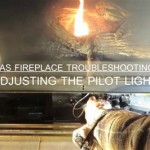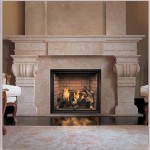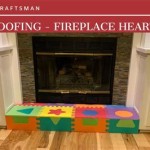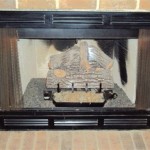Does an Electric Fireplace Get Hot? Understanding the Heat Output and Safety Features
Electric fireplaces offer a convenient and aesthetically pleasing alternative to traditional wood-burning fireplaces. They provide supplemental heat, create a cozy ambiance, and are relatively easy to install and operate. However, a common question that arises when considering an electric fireplace is whether it actually gets hot, and if so, how hot it becomes. This article delves into the heat output of electric fireplaces, the mechanisms behind their heating capabilities, associated safety features, and other factors that influence the overall heat experience.
The primary function of an electric fireplace is often to provide supplemental heating to a room. While the visual appeal of the flames is a significant draw, the ability to generate warmth is a critical aspect for many users. The degree to which an electric fireplace gets hot is directly related to its heating element and its power output, which is typically measured in watts.
Most electric fireplaces use either infrared heating or forced-air heating. Infrared heaters radiate heat directly onto objects and people in the room, providing a more targeted and efficient heating experience. Forced-air heaters, on the other hand, use a fan to blow air over a heated element, distributing warmth throughout the room. The choice between these heating methods can influence the sensation of heat felt in the vicinity of the fireplace.
Understanding Heat Output and Wattage
The heat output of an electric fireplace is generally measured in British Thermal Units (BTUs). A BTU represents the amount of energy required to raise the temperature of one pound of water by one degree Fahrenheit. Electric fireplaces typically range in output from 4,000 to 5,000 BTUs, which is generally sufficient to heat a room of approximately 400 to 1,000 square feet. This heating capacity is comparable to that of a small space heater.
The wattage of an electric fireplace is directly correlated to its heat output. The higher the wattage, the greater the heat output. Most electric fireplaces operate on a standard 120-volt electrical circuit and draw around 1,500 watts. Some models may offer adjustable heat settings, allowing users to reduce the wattage and, consequently, the heat output. This feature can be beneficial for controlling the room temperature and conserving energy.
It is important to note that while electric fireplaces can produce a significant amount of heat, they are not designed to be primary heating sources for an entire house. They are intended to provide supplemental heat and create a comfortable environment in a specific room or area. Relying solely on an electric fireplace for heating an entire house may result in increased energy consumption and potentially insufficient heating in larger or poorly insulated homes.
The surface temperature of an electric fireplace, particularly around the glass front, can become warm to the touch. However, reputable manufacturers incorporate design features and safety measures to prevent these surfaces from becoming excessively hot and posing a burn risk. The actual temperature of the surface will vary depending on the model, heat setting, and duration of operation.
Safety Features and Burn Prevention
Safety is a paramount concern when it comes to heating appliances, and electric fireplaces are equipped with several features to mitigate potential hazards. One of the most common safety features is an automatic shut-off function. This feature automatically turns off the fireplace if it overheats or is accidentally tipped over. Overheat protection prevents the unit from reaching dangerously high temperatures that could potentially cause a fire or damage the unit itself.
Many electric fireplaces also incorporate cool-touch housings. These housings are designed to remain relatively cool to the touch, even when the fireplace is operating at its highest heat setting. This feature is particularly important for households with children or pets, as it minimizes the risk of accidental burns. The design often includes insulation and ventilation to dissipate heat away from the exterior surfaces.
Another crucial safety feature is the inclusion of a thermostat. The thermostat allows users to set a desired room temperature, and the fireplace will automatically adjust its heat output to maintain that temperature. This prevents the room from becoming excessively hot and helps conserve energy. The thermostat also contributes to a more consistent and comfortable heating experience.
Furthermore, electric fireplaces are designed to be vent-free, meaning they do not require a chimney or flue. This eliminates the risk of carbon monoxide poisoning, which is a significant concern with traditional wood-burning fireplaces. The absence of a chimney also simplifies installation, as no structural modifications to the home are necessary. Regular maintenance, such as cleaning the air intake vents, is still recommended to ensure optimal performance and safety.
Despite the various safety features, it is essential to exercise caution when operating an electric fireplace. Users should always follow the manufacturer's instructions and guidelines. It is advisable to keep flammable materials, such as curtains, furniture, and paper, away from the fireplace to prevent fire hazards. The fireplace should also be placed on a level surface to ensure stability and prevent accidental tipping. Regularly inspect the power cord and plug for any signs of damage, and never use the fireplace if the cord is frayed or damaged.
Factors Influencing Perceived Heat
The perceived heat from an electric fireplace is influenced by several factors beyond the wattage and BTU output. These factors include room size, insulation, ambient temperature, and personal preferences. A larger room will require more heat to maintain a comfortable temperature compared to a smaller room. Poor insulation in the walls and windows can lead to heat loss, making it more difficult for the fireplace to effectively heat the space. The initial ambient temperature of the room will also affect how quickly and efficiently the fireplace can raise the temperature.
Personal preferences play a significant role in how warm a person perceives the heat to be. Some individuals may prefer a warmer environment, while others may find a slightly cooler temperature more comfortable. The adjustable heat settings on many electric fireplaces allow users to customize the heat output to their individual preferences. Experimentation with different settings can help find the optimal balance between comfort and energy efficiency.
The location of the electric fireplace within the room can also impact the perceived heat. Placing the fireplace in a central location allows for better heat distribution throughout the room. Avoiding obstructions, such as furniture or large objects, can ensure that the heat is not blocked and can circulate freely. Optimizing the placement of the fireplace can enhance its heating effectiveness and create a more comfortable environment.
The type of heating element used in the electric fireplace can also influence the sensation of heat. Infrared heaters provide a more direct and focused heat, which can feel warmer to individuals sitting directly in front of the fireplace. Forced-air heaters, on the other hand, provide a more diffused heat, which may be preferable for heating larger rooms or for individuals who prefer a less intense heat sensation. The choice between these heating methods is largely a matter of personal preference and the specific heating needs of the room.
Finally, the overall design and construction of the electric fireplace can contribute to the efficiency of its heating performance. Well-insulated units will retain heat more effectively, reducing energy consumption and improving heating efficiency. High-quality components and materials can also contribute to the longevity and reliability of the fireplace, ensuring consistent heating performance over time. Investing in a reputable brand and model can provide peace of mind and ensure a safe and effective heating experience.
In summary, electric fireplaces do indeed get hot, providing supplemental heat to a room. The degree of heat generated is dependent on the wattage, heating element type, and user settings. Safety features such as overheat protection, cool-touch housings, and thermostats are integrated to minimize risks. Factors such as room size, insulation, and personal preferences influence the perceived heat. Selecting a suitable model and operating it according to manufacturer guidelines will ensure a safe and comfortable heating experience.

Does Electric Fireplace Give Off Heat Simple Explanation

Do Electric Fireplaces Give Off Heat Here S What To Know Before You Buy Hunker

Can An Electric Fireplace Heat A Room Tips

Do Electric Fireplaces Give Off Heat Electronicshub

ᑕ❶ᑐ How Hot Do Electric Fireplaces Get Magikflame Blog

Fireplace Facts Myths Do Electric Fireplaces Give Off Heat Stylish

Do Electric Fireplaces Give Off Heat Direct Learning Center

Are Electric Fireplaces Hot To Touch Fireplace Universe

Which Electric Fireplace Gives The Most Heat Direct Fireplaces

Does An Electric Fireplace Give Off Heat Fascinated Home








